
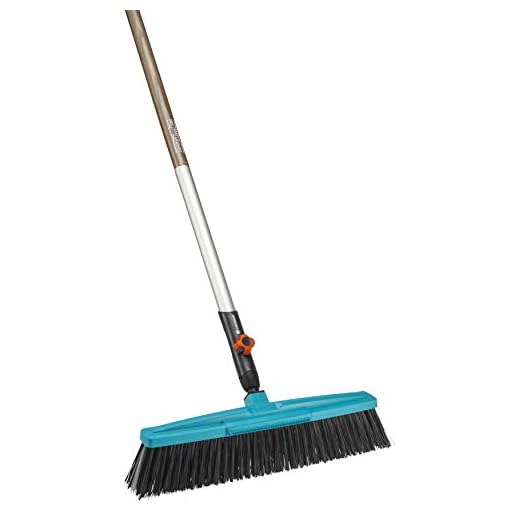
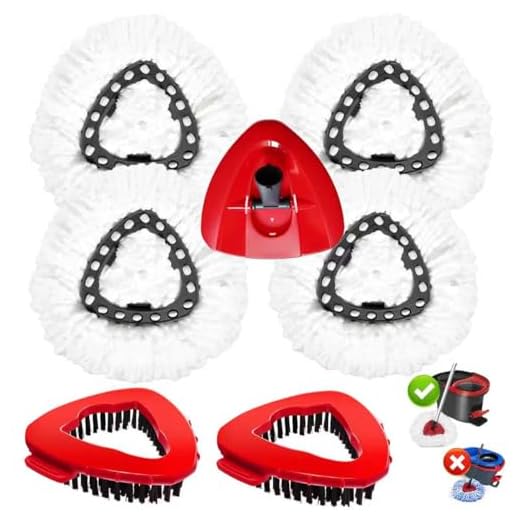

Utilising a mixture of water, vinegar, and baking soda creates a powerful solution that breaks down grime and stains. Combine a cup of white vinegar with a cup of baking soda in a suitable container, then add a gallon of warm water. This concoction not only helps dissolve dirt but also targets stubborn algae or moss growth, making your surface fresh.
Using a stiff-bristled brush, apply this mixture generously over the surface. Allow it to sit for approximately 15 to 30 minutes, enabling the solution to penetrate and loosen the debris. Scrubbing with consistent pressure ensures that the build-up is effectively removed. Rinse the area thoroughly with water afterwards to eliminate any residue and restore the shine.
Another efficient technique involves employing a broom and a bucket of soapy water. Mix mild dish detergent with warm water, dip the broom into the solution, and sweep the area diligently. Pay special attention to corners and edges where dirt accumulates the most. Following this method will help maintain a tidy appearance and prolong the lifespan of the material.
If persistent stains remain, using a targeted stain remover or a solution of hydrogen peroxide can yield good results. Apply the remover directly to the stained areas, let it sit for a defined period according to the product instructions, and scrub gently. This focused approach ensures a more intense clean for those troublesome spots.
Efficient Techniques for a Spotless Pathway
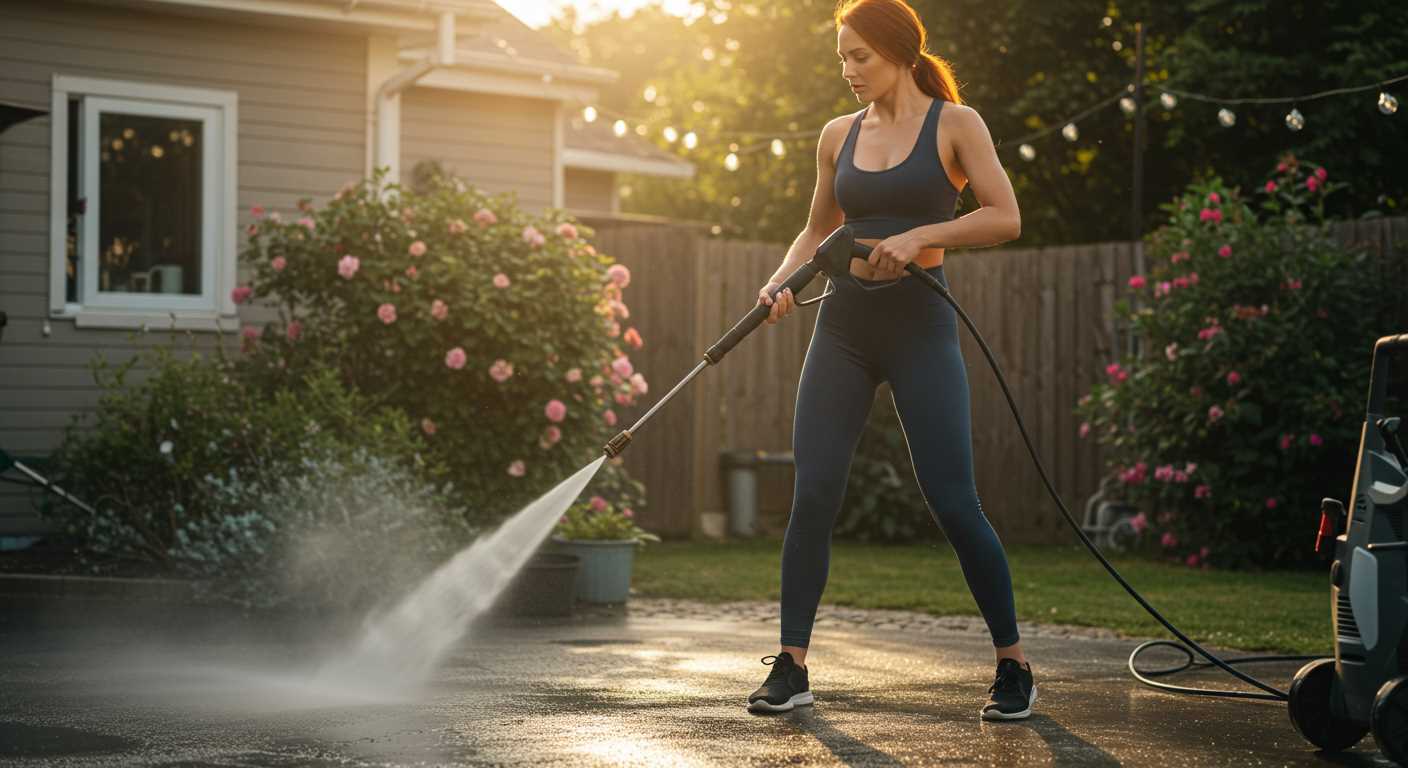
Mix baking soda and water to form a paste; apply it directly onto stubborn stains. Allow it to sit for 15-20 minutes before scrubbing with a stiff-bristled brush. This method lifts grime effectively and works well on a variety of surfaces.
Vinegar can be an exceptional natural cleanser. Spray undiluted white vinegar over the area and let it sit for half an hour. The acidity breaks down dirt and mildew, making it easier to scrub away. Rinse thoroughly afterwards to remove any residue.
For stubborn moss or algae, a solution of three parts water to one part bleach works wonders. Apply it carefully to avoid harming nearby plants, and let it sit for 10-15 minutes. Afterwards, a good rinse will ensure all the bleach is washed away.
If dirt is infiltrated in crevices, a stiff brush or broom can be handy. Use it to dislodge debris and reach tight spots. Following this, a garden hose with a nozzle can provide a strong stream to flush out those areas without needing heavy machinery.
Regular maintenance is key. Sweeping periodically prevents buildup and keeps the surface looking tidy. After rainfall, remove any standing water as it can encourage weed growth and moss.
For those who prefer eco-friendly options, a solution of castile soap and warm water is gentle yet effective. Mix a few drops of soap in a bucket of warm water, scrub the surface, and rinse well for a natural shine.
Choose the Right Cleaning Solution for Your Walkway Material
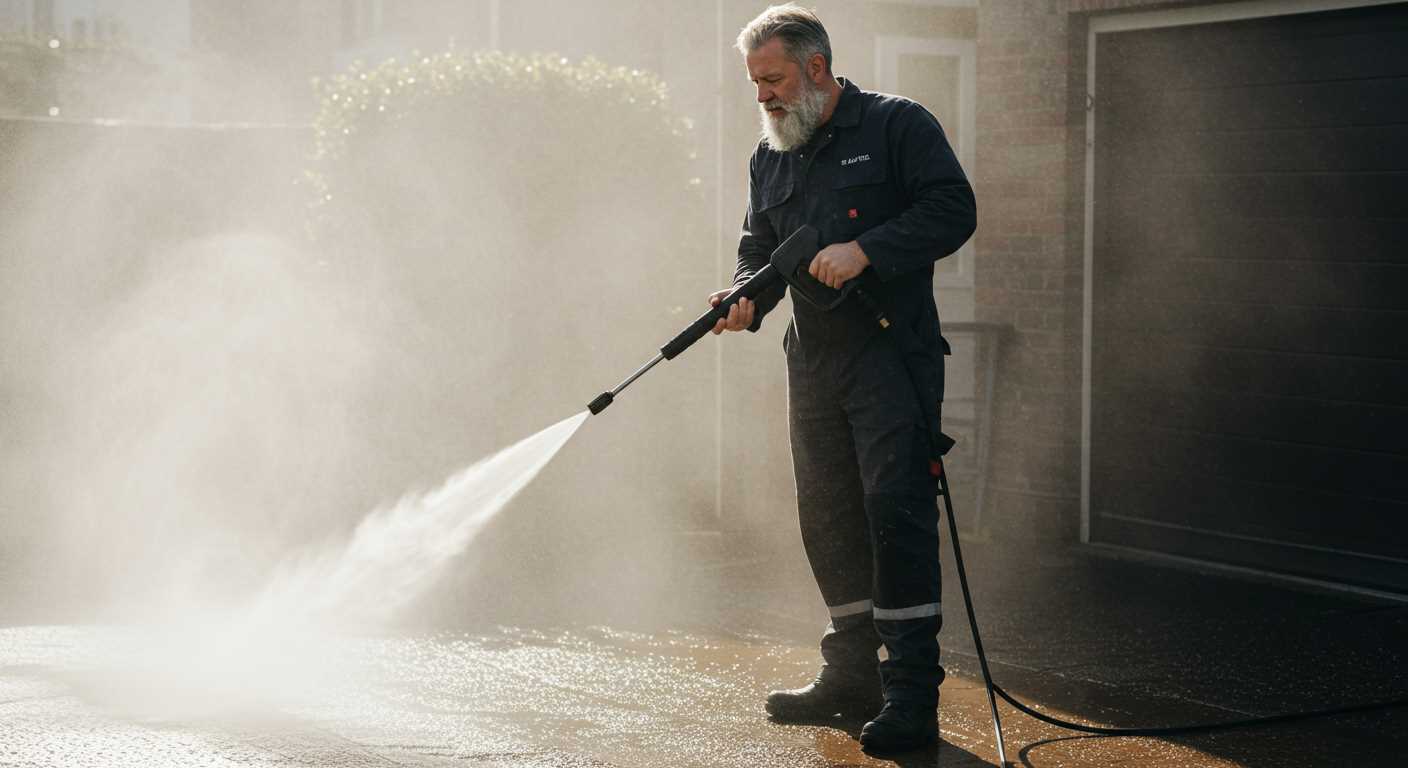
Selecting an appropriate cleaning agent is critical based on the surface type. Each material responds differently to various substances, so here’s a guide to help you choose wisely.
| Material Type | Recommended Cleaning Solution | Application Method |
|---|---|---|
| Concrete | Oxygen bleach mixed with water | Scrub with a stiff-bristle brush |
| Brick | Vinegar solution (equal parts vinegar and water) | Apply with a spray bottle, scrub gently |
| Stone | pH-neutral dish soap | Use a mop or sponge for application |
| Pavers | Commercial degreaser or vinegar solution | Apply on spots, agitate with a brush |
| Wood | Soft soap and warm water mixture | Wipe down with a cloth |
Always test your chosen solution on a small, inconspicuous area before full application. This ensures compatibility and prevents unexpected damage. Additionally, if stubborn stains persist, consider using a specialized formula designed for specific materials. This targeted approach often yields the best results.
Gather Necessary Tools and Equipment for Manual Cleaning
To begin the task effectively, ensure you have these items ready:
- Broom: A sturdy, outdoor broom with stiff bristles for removing loose debris and dirt.
- Scrub Brush: A firm-bristled brush that can tackle stubborn stains and ingrained dirt.
- Bucket: For mixing cleaning solutions and rinsing brushes as needed.
- Gardening Gloves: Protect your hands from harsh chemicals if using cleaning products.
- Squeegee: Handy for wiping down surfaces after applying a cleaning solution.
- Rake: Useful for gathering larger debris like leaves or twigs from the area.
Optional Items
- Hose: For rinsing off the surface after scrubbing. A nozzle attachment makes it easier to control water flow.
- Protective Eyewear: Shields your eyes from splashes, especially when using chemical cleaners.
- Drop Cloth or Tarp: Protect surrounding areas from potential cleaning solutions.
Having these tools ready will streamline the process, ensuring that the task can be performed efficiently and thoroughly.
Prepare the Area for Cleaning
Begin by removing any obstacles such as furniture, plants, or decorative items that may hinder access. This ensures a clear space for effective maintenance.
Clear Debris
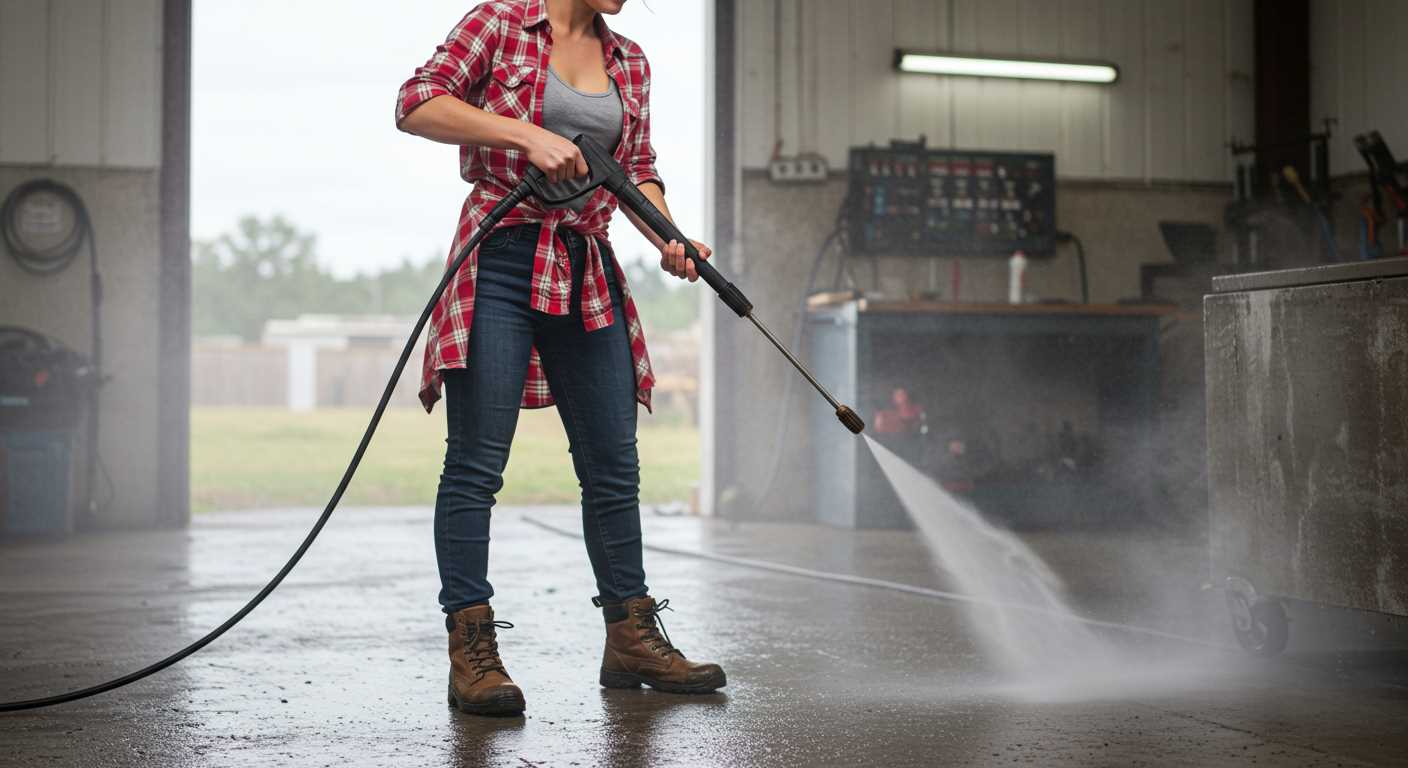
Sweep away leaves, dirt, and other debris using a broom. If there are stubborn spots, a nozzle attachment on your hose can help dislodge them. Ensure the surface is as clean as possible before applying any solutions.
Inspect the Surface
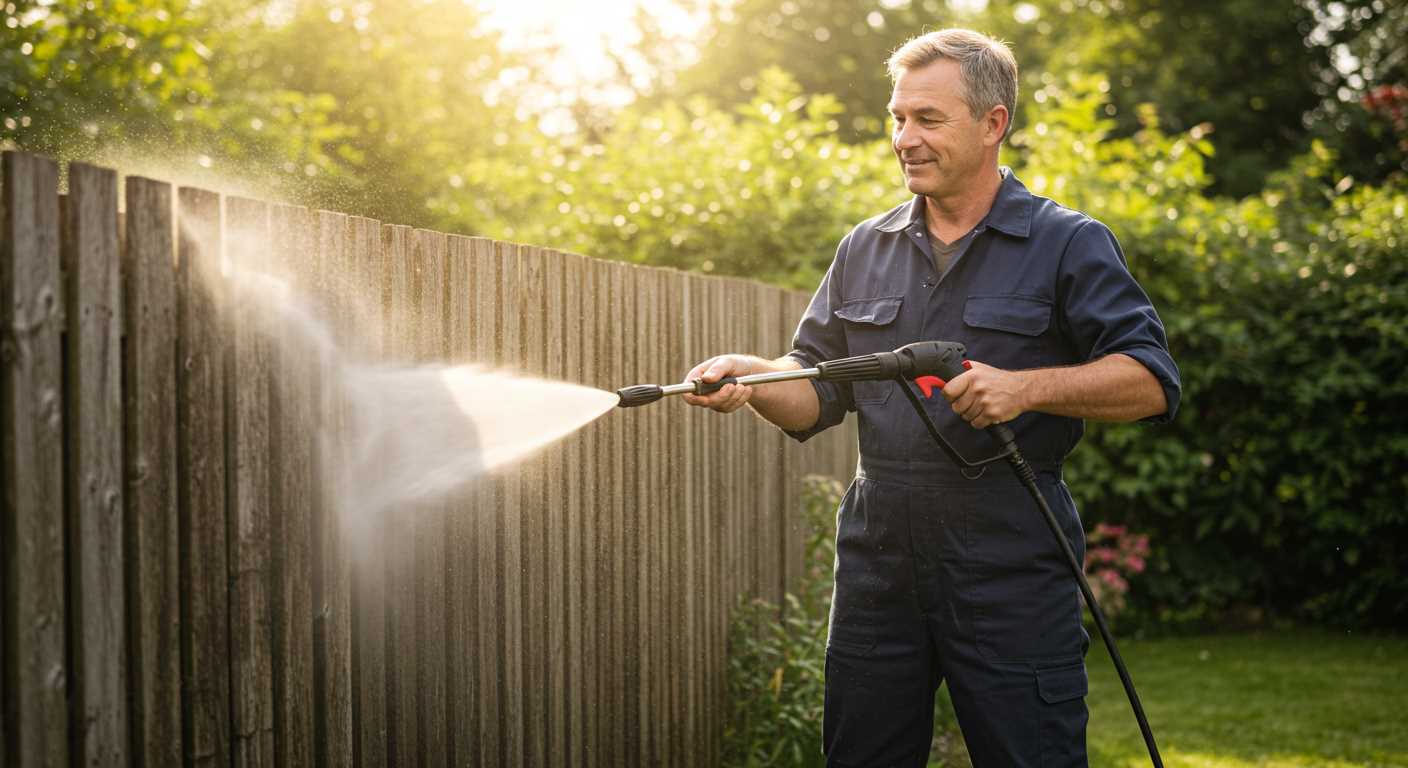
Examine the material for any cracks or damage. Identifying these areas allows for targeted treatment and prevents further deterioration. Check for weeds or moss, as these may require specific attention during your cleansing process.
Apply Cleaning Solution and Remove Stains by Scrubbing
Select a suitable cleaning solution tailored to the surface type. For concrete, a mixture of water and dish soap works well. For stone, consider vinegar diluted with water. Always test a small area before full application to ensure no damage occurs.
After preparing the mixture, pour it evenly across the area in sections. Allow it to sit for 5-10 minutes. This dwell time helps the mixture penetrate stains and loosen dirt.
Using a stiff-bristled brush or broom, scrub the surface vigorously. Focus on stained areas, using circular motions to dislodge grime. For tougher spots, reapply the cleaning mixture and scrub again.
Rinse each section with clean water, ensuring all residue is washed away. Use a bucket or garden hose for this step, avoiding excessive water pressure that could damage the material.
Inspect the area after rinsing. Persistent stains may require a second application of the cleaning solution and additional scrubbing. Keep an eye on the drying process and repeat any necessary treatments until achieving the desired outcome.
Rinse the Surface and Eliminate Residual Cleaning Products
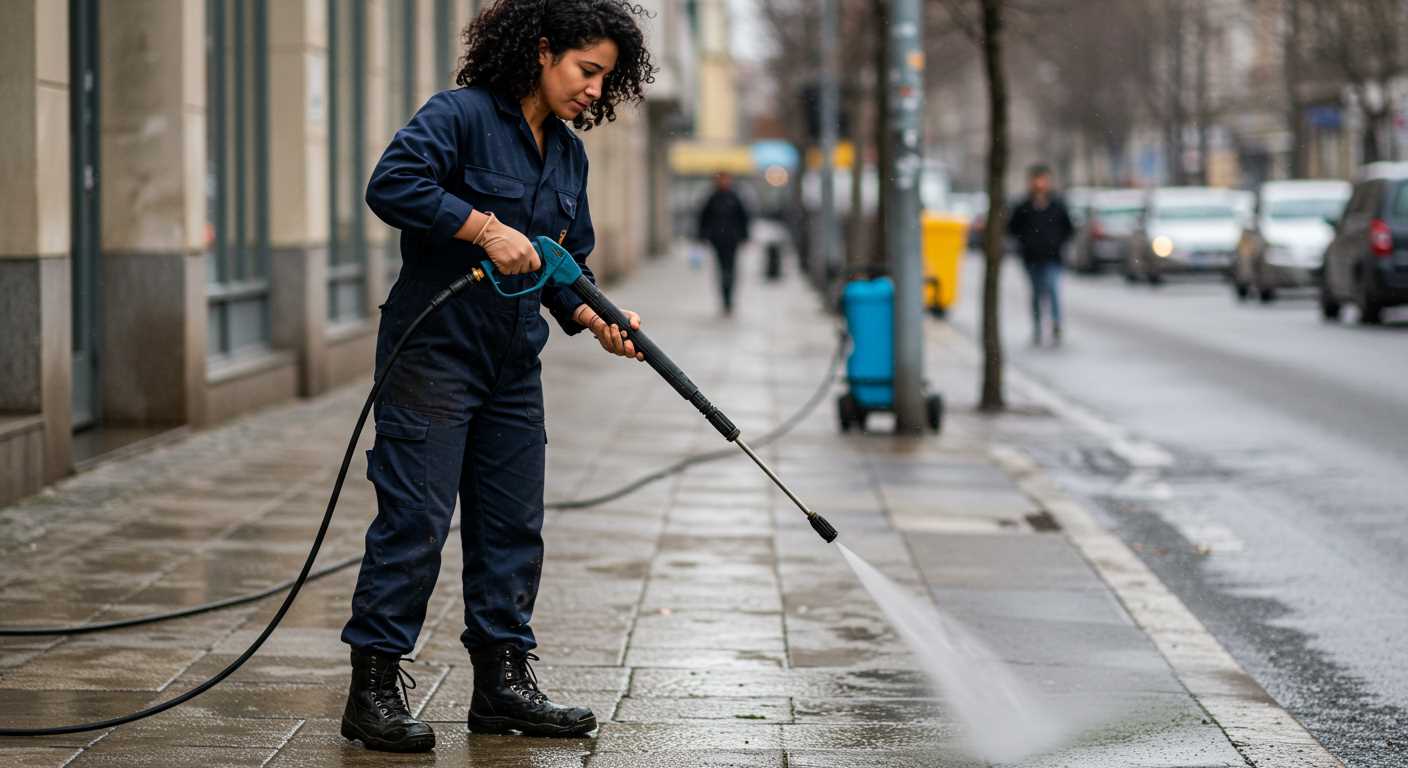
After applying your chosen solution, it’s critical to thoroughly rinse the surface. Use a garden hose fitted with a spray nozzle to direct a strong stream of water across the area. Ensure the nozzle is set to a jet spray to dislodge any lingering dirt and detergent.
As you rinse, pay close attention to corners and edges where debris may accumulate. Move systematically from one side to the other, ensuring that all areas receive adequate water flow. The goal is to wash away any cleaning agents that can leave a residue and jeopardise traction or cause discolouration over time.
If you have access to a bucket, fill it with clean water and use a mop or squeegee to assist in the rinsing process. This method is particularly useful for smaller sections. Dip the mop into the water, wring it out, and apply it to any spots that need extra attention.
Once you’ve rinsed thoroughly, inspect the surface to pinpoint any missed spots still holding onto grime or cleaning solutions. Revisit those areas with water and a mop or soft brush if necessary. This two-step rinse ensures no contaminants remain, allowing the surface to dry cleanly and safely.
After completing the rinsing, the area should be left to air dry completely. If feasible, ventilate the surroundings to speed up the drying process, especially in shaded areas that may retain moisture longer. Be diligent to prevent slips or falls during this stage.
Maintain Your Walkway’s Cleanliness with Regular Upkeep
Establish a routine to keep surfaces looking pristine. Schedule monthly checks to inspect for debris, stains, or growth.
Follow these practical tips:
- Remove leaves and dirt regularly using a broom or rake.
- Inspect for mould or algae; treat immediately with appropriate solutions.
- Fill cracks or holes promptly to prevent weed growth.
- Consider applying a sealant annually to protect from weather damage.
Utilise weather events to your advantage. After heavy rain or storms, take time to inspect and address any water damage or residue left behind.
In colder months, be proactive by de-icing with products that won’t harm the surface material. Regular maintenance prevents larger issues, saving time and resources in the long run.
Stay committed to this maintenance schedule. Small, consistent efforts make a significant difference in keeping your surfaces in top condition.







